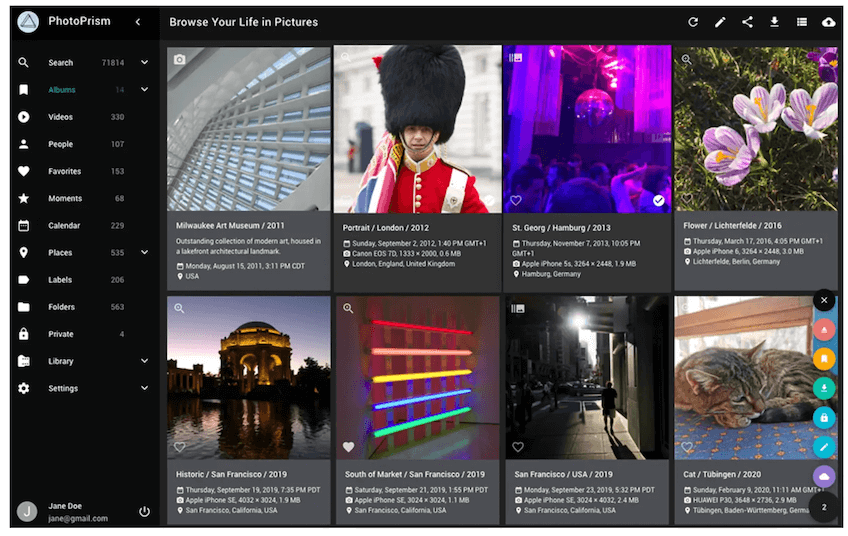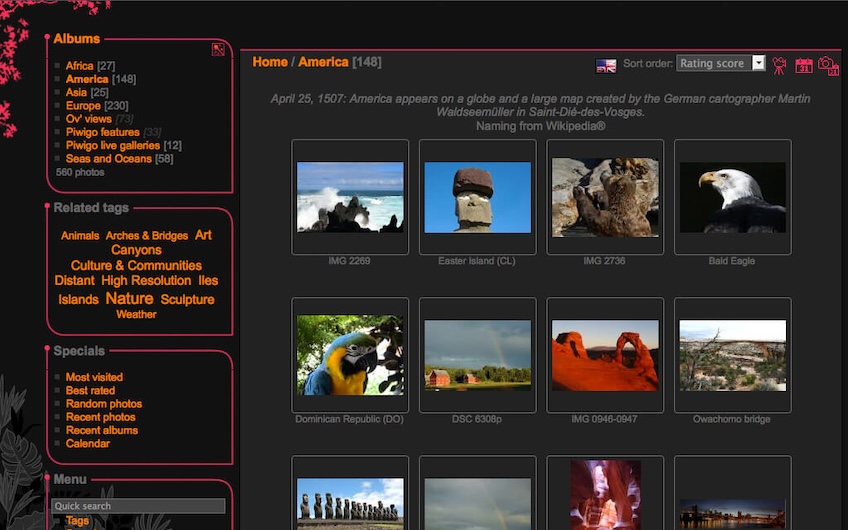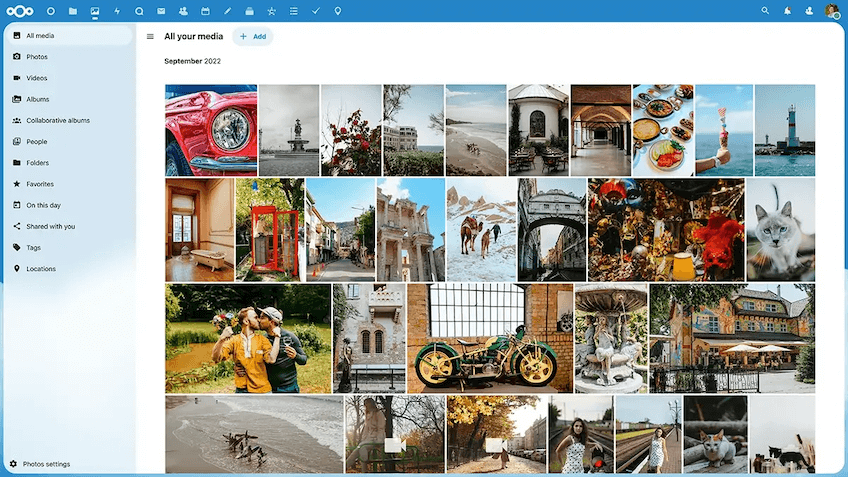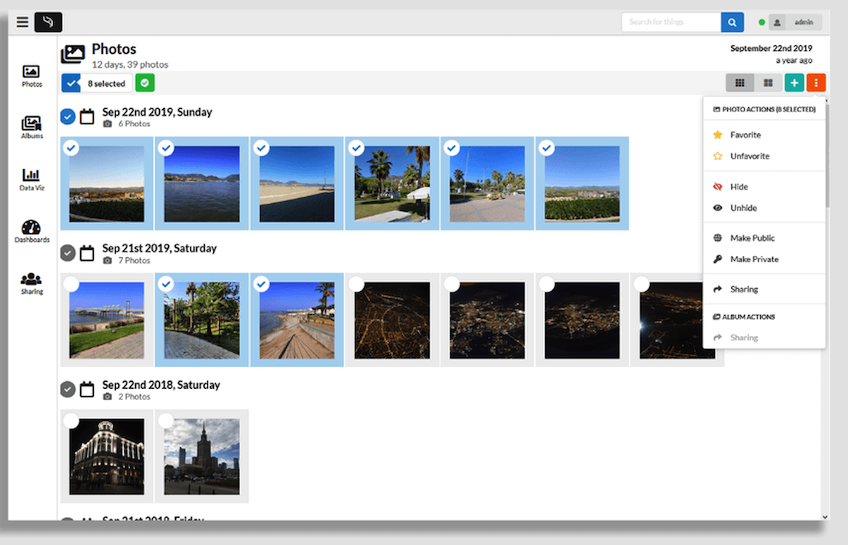
With the increasing amount of digital photos being taken daily, finding the right way to store, organize, and manage them has become more important than ever. Cloud-based services like Google Photos, iCloud, and OneDrive offer convenience but come with privacy concerns, subscription fees, and potential data loss if the provider changes policies or shuts down services.
A self-hosted photo server provides a powerful alternative. It allows you to store your images on your own hardware, ensuring complete control over your data, improved security, and enhanced customization options. Whether you are an amateur photographer, a professional managing a vast photo collection, or someone who values privacy, a self-hosted photo server can provide an efficient and cost-effective solution for your needs.
This guide will take you through everything you need to know—from selecting the right software and hardware to setting up, organizing, securing, and optimizing your self-hosted photo server.

A self-hosted photo cloud is a compelling option for those looking to move away from cloud storage and take control of their digital assets. Unlike commercial platforms, self-hosting allows for full ownership, customization, and security of your images. Here are some of the major benefits:
Cloud-based providers often scan and analyze your photos for AI training, targeted advertising, or other purposes. With a self-hosted solution, you keep complete control over who can access your photos, ensuring that they remain private.
Subscription-based cloud storage can quickly become expensive, especially if you have a large collection of high-resolution images. A self-hosted setup may require an upfront investment in hardware, but it eliminates recurring fees and allows unlimited storage.
Unlike commercial solutions that impose restrictions on features and storage limits, a self-hosted server allows for full customization. You can choose software with AI-assisted organization, facial recognition, and advanced search capabilities.
Cloud-based storage requires an internet connection, which can lead to delays in accessing or uploading large files. A self-hosted server, especially when running on local hardware, allows for instant access to your photo library with faster performance. Additionally, you can configure remote access for on-the-go usage.
Whether you are storing personal memories, managing a professional photography portfolio, or handling large collections for business purposes, self-hosting provides a scalable and secure solution.
A high-quality self-hosted photo server should provide a combination of efficient storage, advanced organization, and seamless access. Here are the essential features to look for:
A good system should support structured albums, automatic sorting, and metadata tagging to help keep your photo collection organized. Some software solutions offer AI-powered categorization and face recognition to automate this process.
Whether you are sharing family albums or collaborating with a team, your server should allow multi-user support, secure link sharing, and public/private album settings. Some tools also provide granular access control for specific users or groups.
Protecting your data is crucial. A reliable self-hosted photo storage solution should support automated backups, redundancy through RAID/NAS, and synchronization with external storage or cloud services for additional security.
Modern self-hosted software can incorporate features like facial recognition, object detection, and smart album creation, making it easier to organize and retrieve photos quickly.
A well-designed server should provide access through both a web-based dashboard and mobile apps. This ensures that you can upload, view, and manage your photos from any device.
By selecting software that offers these features, you can ensure that your self-hosted photo server functions as an efficient, scalable, and user-friendly solution.
Choosing the right software is one of the most important steps when setting up a self-hosted photo server. The right platform will depend on your specific needs, whether it’s AI-assisted organization, ease of access, or enterprise-level photo management. Here are some of the best options available:

One of the most powerful self-hosted photo management solutions, PhotoPrism includes AI-powered search, facial recognition, and object detection. It’s a great choice for users looking for an intelligent way to organize their photos.

A feature-rich, community-supported platform that offers strong multi-user capabilities, advanced tagging, and a flexible album structure. It is widely used by professional photographers and businesses.

A lightweight and simple photo-sharing solution, Lychee is ideal for users who want an easy-to-set-up and minimalistic platform.

If you’re already using Nextcloud for cloud file storage, Nextcloud Photos seamlessly integrates and allows you to manage photos alongside your other files.

An open-source alternative to Google Photos, LibrePhotos supports automatic face and object recognition, making it an excellent choice for those looking to replicate Google’s features in a self-hosted setup.
Each of these options has its strengths, so consider what features matter most to you before making a decision.
A self-hosted photo server requires the right hardware, software, and security setup.
Pick hardware based on your storage needs:
Set up the core software for managing photos:
Ensure your server is protected:
A properly configured self-hosted photo cloud ensures both security and accessibility, allowing you to manage and access your images from anywhere.
A structured photo library helps with organization, retrieval, and efficiency.
Many self-hosted platforms support automatic sorting, reducing manual effort and improving searchability.
Once your self-hosted photo server is set up and running, you can improve its functionality with additional tools and optimizations. Enhancements can improve performance, increase automation, and make managing your library even easier.
These enhancements allow you to tailor your photo server to your specific needs, making it faster, smarter, and easier to use.
Even a well-configured self-hosted photo server may occasionally run into technical problems. Knowing how to identify and resolve issues quickly can help keep your system running smoothly.
Large photo libraries can slow down indexing and browsing. Enabling caching, optimizing the database, and using a CDN (for remote access) can improve speed.
If some users cannot access certain files, adjusting file permissions and ensuring correct user roles in the software settings can resolve access issues.
Keeping your software up to date prevents security vulnerabilities and ensures compatibility with new features. Regularly backing up your database before updates is recommended.
If your server is running out of space, consider adding additional storage drives, setting up automated file archiving, or compressing large media files.
If external access is slow or unavailable, checking firewall settings, router configurations, and SSL certificates can help resolve connectivity problems.
Regular monitoring, maintenance, and backups can help prevent major issues and keep your photo server performing well over time.
A self-hosted photo storage system is an excellent solution for anyone looking for privacy, cost savings, and full control over their photo collection, eliminating reliance on third-party cloud providers. By selecting the right software and hardware, setting up an efficient organization system, and implementing strong backup strategies, you can ensure that your photos remain safe, accessible, and well-organized.
Whether you’re an individual with a growing personal collection or a professional managing thousands of images, self-hosting offers scalability, security, and complete customization that cloud services cannot match.
For a fast and reliable self-hosted photo server, SiteValley.com’s VPS-1 plan is a great choice. Starting at $9.99 per month, it offers NVMe SSD storage, unmetered bandwidth, and global data center options, ensuring smooth performance and secure access. With strong uptime and expert support, you get the flexibility and power needed to manage your photo librar





Quick Customer care response, accurate and broad assistance, easy to use client area.....





I am very happy with the service. I am with site valley for many years and at the present usimg 2 hosting packages. Their service is excellent and super fast. Thanks & Greatly Appreciated





I've been hosting my websites with Sitevalley for more than 6 years. Very satisfied with the services and reliability they provide, competitive prices, almost no downtime, fast and knowledgeable customer support.





I have been using side valley for a couple of years now and have to say I am very happy with the service they offer.I use many Hosting services but site valley stands out in front. Reliable service, great support.I don't normally leave reviews but felt I wanted to for this service as it has been fantastic





I didn't want to review so soon on into taking out hosting with site valley but I feel obliged because their customer service is outstanding, second to none, every time I had an issue it was sorted immediately. I would highly recommend Site Valley.





I have been with Sitevalley for over a year and it's the best hosting I have EVER used. And I have been through a lot of them.





The support staff are amazing, and it's clear that they have a passion for hosting websites. I've rather enjoyed this webhosting company and it's stability for the price is bar-none, amazing.





My collegue adviced me to use SiteValley as a reliable hosting provider with great prices, professional and fast Customer Service. My experience with SiteValley was exactly the way I was promised.





I have been with SiteValley for many years, and plan to stay with them for many more. Customer support is very responsive and knowledgeable.
SiteValley.com is rated 4.8 / 5 based on 329 Reviews »

© 2001 – 2024 SiteValley.com. All Rights Reserved.